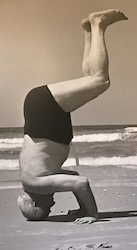Aging, Impulsivity, and the Path Toward Wisdom
I think being able to age gracefully is a very important talent. It is too late for me.
— Clint Eastwood
Have you ever noticed yourself blurting out sharp or negative responses in conversation—only to catch yourself later and think, “Hmm, that wasn’t fair”?
It’s something many people experience as they get older, sometimes even noticing it in friends or colleagues who weren’t like this before.
“I’d find myself cutting people off or assuming I knew where they were going.”
—David, age 62
David, a project manager in his sixties, put it this way. Elena, in her late seventies, shared a similar experience: “I was about to blurt out to my grandson, ‘That’s silly, I don’t care,’ before he’d even finished speaking.” Both recognized the same pattern—impatience, jumping to conclusions, reacting before thinking.
The Science Behind the Blurting
Psychologists Hasher and Zacks have called this the inhibitory deficit, that is, the gradual weakening of the brain’s ability to hold back a first impulse as we age. It’s a shift that can make us more likely to respond reflexively than thoughtfully.
Yet all societies have the image of the wise older person to whom we can go for support and guidance: wisdom. Researchers have investigated this opposite tendency, describing wisdom as an ability to pause, reflect, and see multiple perspectives. However, this is not as common as creeping irritability; wisdom requires cultivation over time through openness, reflection, and life’s challenges.
What Makes a Difference?
The Washington Post recently reported on large-scale intervention studies (2025) showing that modest lifestyle adjustments—like exercise, healthier diets, social interaction, and mental challenges—can improve executive function and processing speed in older adults.
These cognitive gains suggest that the “gap” between impulse and reflection isn’t fixed—it can be widened with intentional support.
“At work I felt the urge to interrupt—and then I noticed it, like a push in my chest. I waited, just a breath longer—and I gained clarity that changed how I responded.”
—David
Feldenkrais®: Practicing the Pause
The Feldenkrais Method® offers a unique way to practice this widening of the gap. By slowing down movement and drawing attention to subtle sensations, it trains the nervous system to notice the space before action.
David described it this way: “In class I learned how to stop rushing into a movement, and to feel where I was before deciding what to do. That skill carried over. Now, even in conversation, I can sense the same pause. I don’t feel trapped in my first reaction anymore—I have options.”
Elena found something similar at home: “Instead of dismissing my grandson, I softened, let him finish, then asked him to show me—sparking a beautiful connection.” Later she reflected: “Feldenkrais gave me a way to notice the tension in my chest before I spoke. Once I felt that, I could choose differently. It surprised me how natural it became, like discovering a hidden lever I didn’t know I had.”
In both stories, what had been a reflexive blurting impulse became an opportunity for connection. That’s the gift of Feldenkrais: not to suppress impulses, but to give them new channels. By cultivating presence in how you move and breathe, you cultivate presence in how you listen and respond. Over time, the gap between impulse and action becomes less of a struggle and more of a doorway—into curiosity, flexibility, and, at times, the clarity we often associate with wisdom.
Keep Exploring
If this resonates, you may enjoy some of my other writings on aging, movement, and awareness. Articles include:
For a more hands-on experience, you can also explore my recorded courses and online programs, where I guide you through lessons designed to bring more ease and clarity into everyday life: see recorded class sets here.
References
Hasher, L., & Zacks, R. T. Working memory, comprehension, and aging: A review and a new view.
Baltes, P. B., & Staudinger, U. M. Wisdom: A metaheuristic to orchestrate mind and virtue toward excellence.
Ardelt, M. Empirical assessment of a three-dimensional wisdom scale.
New JAMA study: lifestyle changes improve brain function in older adults (2025). JAMA via Washington Post (read here)






